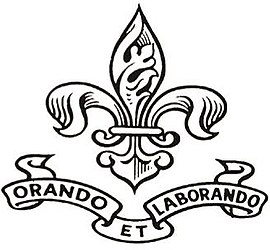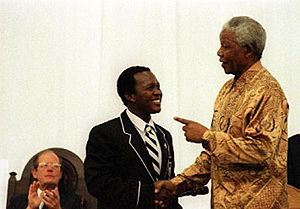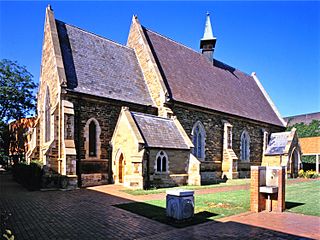
Pietermaritzburg (; is the capital and second-largest city in the province of KwaZulu-Natal, South Africa after Durban. It was named in 1838 and is currently governed by the Msunduzi Local Municipality. The town was named after King Dingane's royal homestead uMgungundlovu. Pietermaritzburg is popularly called Maritzburg in Afrikaans and is often informally abbreviated to PMB. It is a regionally important industrial hub, producing aluminium, timber and dairy products, as well as the main economic hub of uMgungundlovu District Municipality. The public sector is a major employer in the city due to local, district and provincial government offices located here.

The University of KwaZulu-Natal is a university with five campuses in the province of KwaZulu-Natal in South Africa. It was formed on 1 January 2004 after the merger between the University of Natal and the University of Durban-Westville.

Kearsney College is a private boarding, English medium high school for boys in Botha's Hill, a small town between the provincial capital of Pietermaritzburg and Durban, in the KwaZulu-Natal province of South Africa.
Hilton is a small town that lies between Howick and Pietemaritzburg in the province of KwaZulu-Natal, South Africa. In 1872 the Reverend William Orde Newnham opened Hilton College on a large estate 7.8km north of the town, which is now one of South Africa's leading private schools.
Pinetown is a city that forms part of the eThekwini Metropolitan Municipality, based just inland from Durban in KwaZulu-Natal, South Africa. The town is situated 16 km north-west of Durban and 64 km south-east of Pietermaritzburg.
Maritzburg College is a semi-private English-medium high school for boys situated in the city of Pietermaritzburg in the KwaZulu-Natal province of South Africa. Founded in 1863, it is the oldest boys' high school in KwaZulu-Natal, and one of the oldest schools in South Africa. As of February 2024 it is attended by 1,260 students, of whom approximately 495 are boarders.

The University of Natal was a university in the former South African province Natal which later became KwaZulu-Natal. The University of Natal no longer exists as a distinct legal entity, as it was incorporated into the University of KwaZulu-Natal on 1 January 2004. It was founded in 1910 as the Natal University College in Pietermaritzburg and expanded to include a campus in Durban in 1931. In 1947, the university opened a medical school for non-white students in Durban. The Pietermaritzburg campus was known for its agricultural engineering programmes, hence the nickname "the farmers" whilst the Durban campus was known as "the engineers," as it concentrated on other engineering programmes.

Balgowan is a valley in the KwaZulu-Natal Midlands in South Africa.
Durban High School is a public English medium high school for boys situated in the suburb of Musgrave in Durban in the KwaZulu-Natal province of South Africa.

Thomas More College is an independent, co-educational day school located in Kloof, near Durban in KwaZulu-Natal, South Africa.

The KwaZulu-Natal midlands is an inland area of KwaZulu-Natal, South Africa that starts from Pietermaritzburg and ends before the Drakensberg mountain range.
Cordwalles is a private, boarding preparatory school for boys founded in 1912. It is located in Pietermaritzburg, the capital city of KwaZulu-Natal, South Africa.
Howick High School is a coeducational public school in Howick, KwaZulu-Natal, South Africa, established on 27 June 1967. Whilst it has a weekly boarding facility, known as Midmar House, which can accommodate up to 100 students who live in the local surrounding districts, Howick High School is not a full-time boarding school.
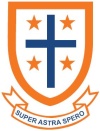
Treverton Preparatory School and College, situated in Mooi River, South Africa, cater to boys and girls of all faiths from Grades 0 to 12 and Post-Matric. As a member of the Independent Schools Association of Southern Africa (ISASA), Treverton is an inter-denominational Christian school founded on a Baptist heritage.Treverton Preparatory School and college is a private school and college

James Cameron Todd was a British Anglican canon and schoolmaster, who founded Michaelhouse school in South Africa.
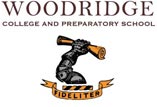
Woodridge College is a private, co-educational school in the Eastern Cape, South Africa.
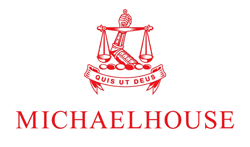
Michaelhouse is a full boarding senior school for boys founded in 1896. It is located in the Balgowan valley in the Midlands of KwaZulu-Natal, South Africa.
The following is a timeline of the history of Pietermaritzburg. It is part of the Msunduzi Local Municipality in the Umgungundlovu District Municipality, KwaZulu-Natal province, South Africa.
